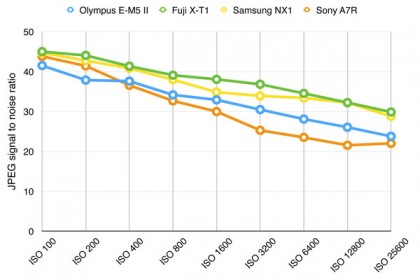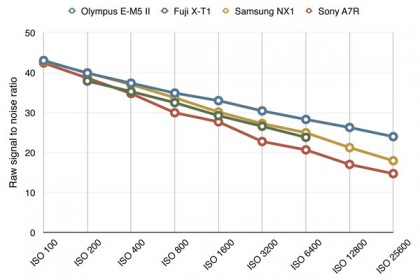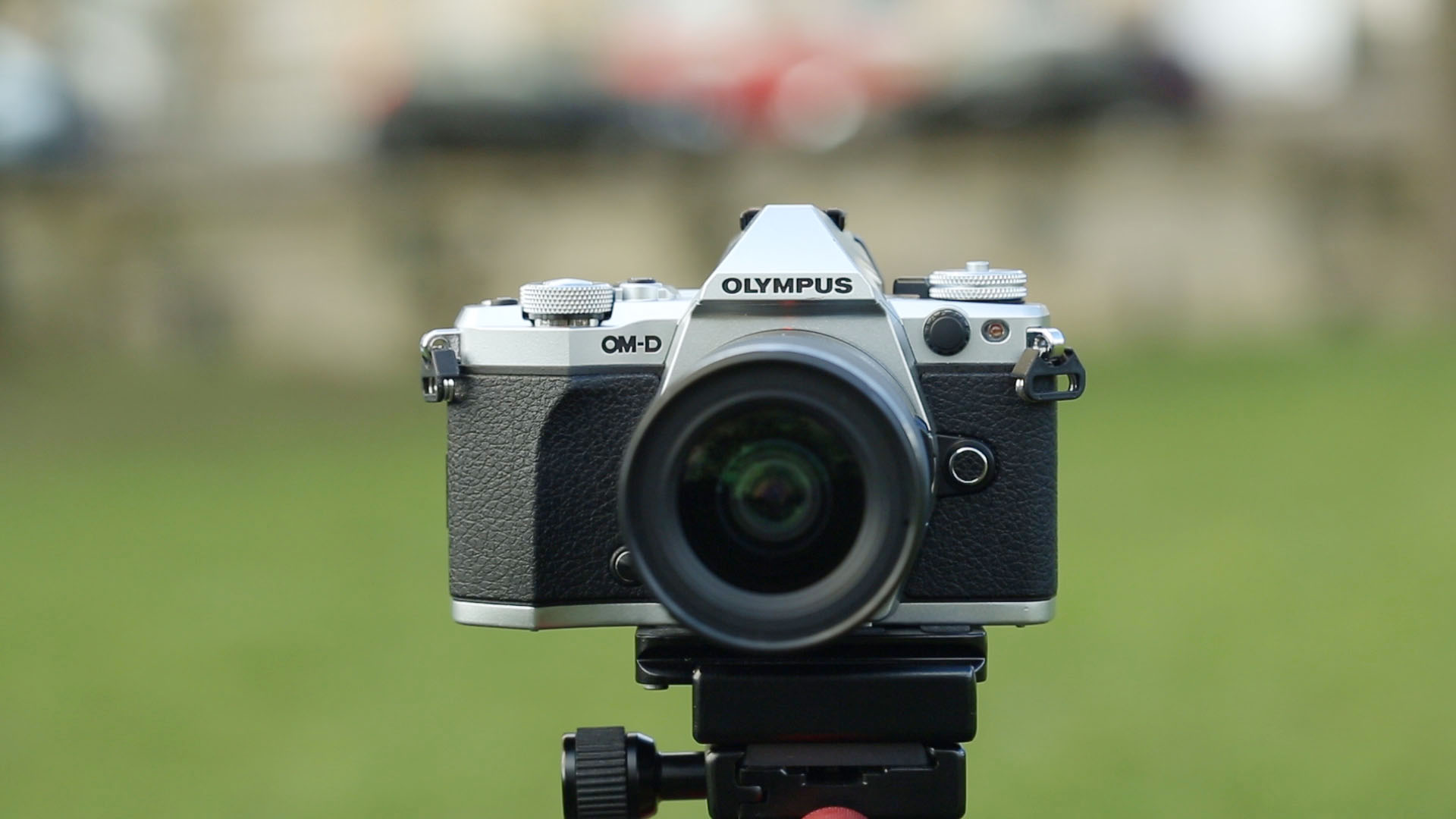Why you can trust TechRadar
The signal to noise ratio indicates the difference in strength between actual image data and random noise. A high signal to noise ratio (SNR) is good because it indicates a cleaner and better quality image.
For more more details on how to interpret our test data, check out our full explanation of our noise and dynamic range tests.
JPEG signal to noise ratio

Analysis: The Olympus OM-D E-M5 II has one of the lower signal to noise ratios at the lower sensitivity settings and a fine texture of luminance noise is visible in images taken at ISO 100 and 200 if you look for it at 100% on-screen. However, images also have a good level of detail for a Four Thirds type sensor. It's also worth noting that the Olympus cameras signal to noise ratio rises above that of the full-frame 36Mp Sony Alpha 7R from ISO 400 and above, revealing the benefit of restricting the camera's pixel count to 16 million.
Raw (after conversion to TIFF) signal to noise ratio

Analysis: The E-M5 II's raw results are strikingly similar to its JPEG values and, although there's quite a bit of luminance noise, there's little in the way of chroma noise (coloured speckling) visible at 100%. Nevertheless, the E-M5 II beats the Sony A7R here.
The Fuji X-T1 seems to fare quite badly by comparison, but it's worth noting that these are the results produced when the raw conversions are made using the manufacturer's supplied software. When Adobe Camera Raw is used Fuji cameras usually perform much better against the competition.
